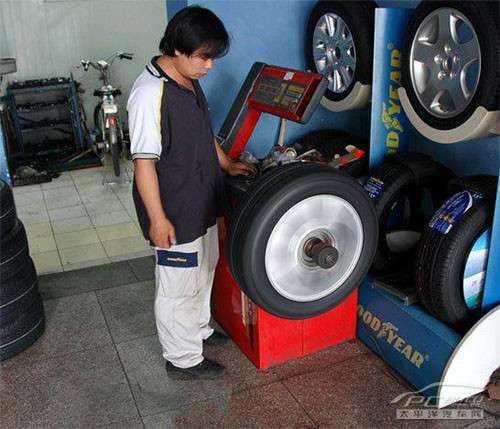
Unbalanced vibration is the main factor that the normal work of the rotating machinery, often using the whole machine balancing method for measuring the phase and amplitude in the industry, through the measurement of rotor vibration signals and key phase signal to calculate the magnitude and phase of unbalance, the boot times less, high accuracy. However, due to the limitation of the rotor structure, it is difficult to obtain the key number [1] for the phase measuring, amplitude measuring and balancing method in the field test of rotating machinery represented by large axial fans.
This unbalanced centrifugal force on the rotor bearing will cause vibration, noise and accelerated bearing wear, so as to seriously affect the performance and life of the product. Motor rotor and spindle, crankshaft, turbine rotor, gyro rotor and escapement rotating parts in the manufacturing process, need to go through in order to smooth the normal operation of balance.
Corrected according to the data measured on the balancing machine rotor unbalance, can improve the quality distribution of the rotor relative to the axis of the vibration force of the vibration generated by rotation of the rotor or the effect on the bearings to reduce the allowable range. Therefore, the balance machine is an essential device for reducing vibration, improving performance and improving quality.
Usually, the balance of the rotor including unbalance measurement and correction of the two steps, the balance machine is mainly used for measuring unbalance, the unbalance correction is often based on drilling machine, milling machine and welding machine and other auxiliary equipment, or by manual method. Some balancing machines have made the correction device part of the balancer.
The gravity balance machine and the centrifugal force balance machine are two kinds of typical balancing machines. Gravity balance machine is usually called static balance machine. It relies on the gravity of the rotor to measure the static unbalance.
If there is an imbalance in the rotor on the two horizontal guides, the moment of gravity of the rotor on the axis will cause the rotor to roll on the rail until the unbalance is at its lowest position.
The balanced rotor is placed on a support supported by a hydrostatic bearing and a mirror is embedded below the support. When there is no unbalance in the rotor, the beam emitted by the light source is reflected by the reflector and projected at the polar coordinate origin of the unbalance indicator. If the unbalanced rotor, rotor bearing in unbalanced weight torque action under the inclined beam deflection mirror bearing also tilt and make reflection, so the light cast on the polar coordinate indicator light spot on the left. The magnitude and position of the imbalance can be obtained from the coordinate position of the deflection of the light spot.
The gravity balancing machine is only suitable for some disk parts with low balance requirement. For the rotors with high balance requirements, the centrifugal type single face or double face balancing machine is adopted.
The centrifugal balancing machine is used to measure the vibration of the rotor under the condition of rotor rotation, or to measure the vibration force acting on the support. The utility model can be divided into a single face balancing machine and a double face balancing machine according to the difference in the number of the correcting planes. One side balancing machine can only measure the imbalance on one plane (static unbalance), although it is measured when the rotor rotates, but still belongs to the static balancing machine. Double balancing is used to measure dynamic unbalance, and also to measure static unbalance and even unbalance, which is commonly called dynamic balancing machine.
According to the different supporting characteristics, the centrifugal force balancing machine can be divided into a soft support balancing machine and a hard support balancing machine. The balance speed is higher than the rotor natural frequency of a support system, called a soft support balancing machine. The balance stiffness of the balancing machine is small, and the detected signal is proportional to the vibration displacement of the support. The balance speed is lower than the natural frequency of the rotor support system, which is called the hard bearing balancing machine. The balance stiffness of the balancing machine is large, and the signal detected by the transducer is proportional to the vibration force of the support.


